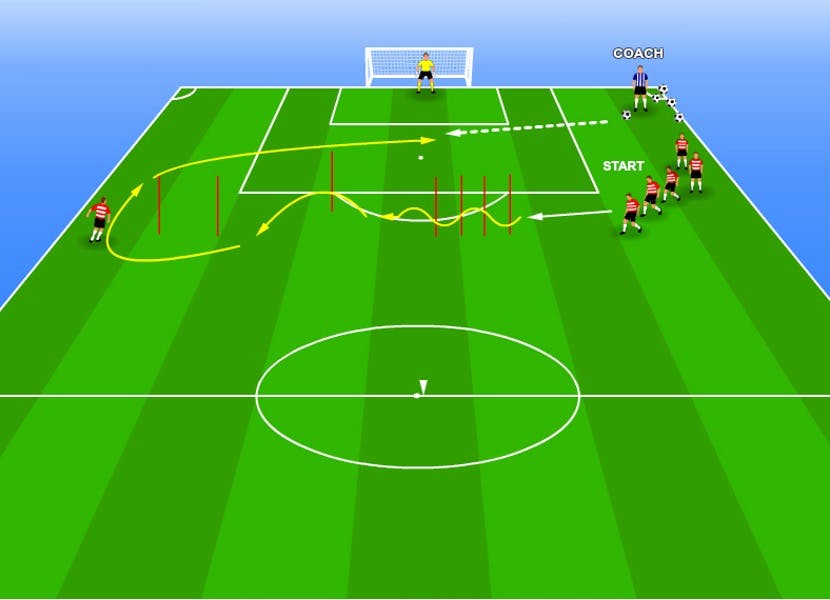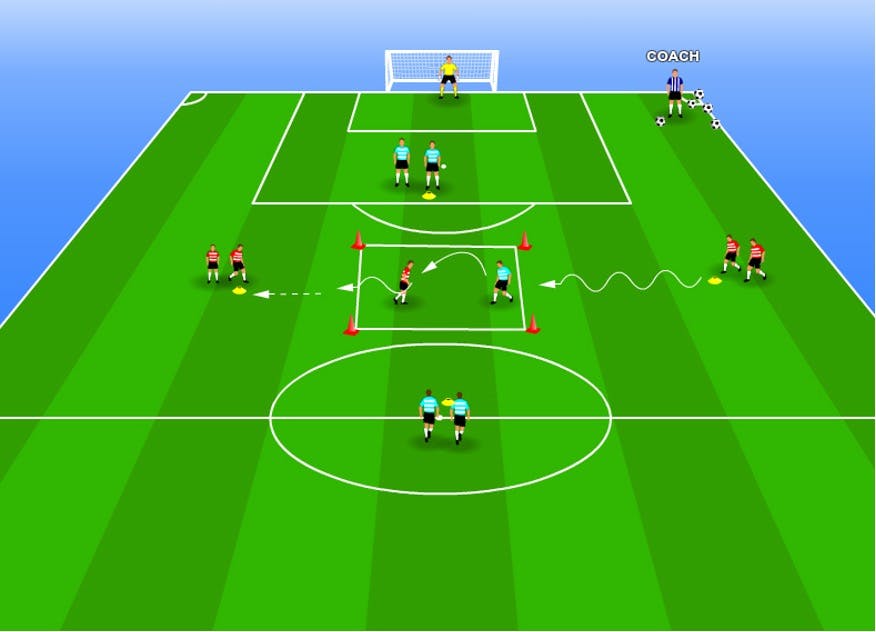By Damilare Ilyiade
A team’s defense that is too susceptible to the opposition’s attack is most likely to concede lots of goals and lose matches even if they have got the best forwards in the league.
This is why teams need to make use of efficient soccer defense drills if they want to stand the chance of having one of the strongest backlines in the beautiful game.
Aside from that mentioned above, soccer teams that are highly knowledgeable in soccer defense drill tactics and techniques of playing defense during a match are more likely to have the ball and be able to create chances.
What are the Fundamentals of Coaching Defense?

Apart from the fact that pressure, cover, and balance make a defense keep good shape, those attributes are the foundations when creating soccer defensive drills.
How do these Three Factors Differ from Each other?
The closest defender to the ball in a soccer match have always been taught to apply pressure to the ball. This could force the attacker into a mistake or the dispossession of the ball from the attacking player’s end. Both the pace of the press and the direction are factors that can influence whether the defender wins the ball or not.
Balance is the ability of a team to position itself in an excellent defensive posture to prevent the switching of the ball to off-balance the defense.
Cover as a defensive positioning gives instant support to the pressuring players by positioning themselves near the pressure.
In this section, you will learn top-notch defensive soccer drills that will help you make your players work as a unit at the back without leaving out interesting ways they can help their defenders react in different defensive situations.
Teaching 1st Defender without Opposition
Objective
The objective of this drill is to let young defenders understand the necessary things they need to do when they are the closest to an opponent with the ball.
Set-Up
A fully-sized goal is needed for this drill. The next thing you need do is to separate the team into two groups of defenders to start on both sides of the goal and also make sure that two attacking players with the ball are positioned outside the penalty area on both sides of the attacking final-third of the field.
Execution
The first defender on both sides of the goal progress forward to close down their respective attacker once the coach gives a command.
Their focus should be on a fast-controlled approach.
The defenders should also be instructed to position their bodies between the ball and the middle of the goal.
All of this is needed to help the players work on the speed of the approach, body posture, and positioning.
4-5 times of this drill should be enough for each of the players or you can also make them continue trying it out until they are comfortable with approaching the attacker.
Coaching Tips
Ensure that the body positioning of the defenders is between the goal and the ball. This drill is aimed at helping close down space quickly at a fast-controlled approach.
Defensive Speed Course
Objective
This fitness training-related drill is centered around improving defensive speed and quickness in front of the goal.
Set-Up
Make sure the defensive players are lined up at the right corner of the 18-yard box and set up six to eight 6ft training hurdles with 2-yards equidistant apart from each other. The next thing to do is to mark off 5-yards and place a training stick there. Having done that, mark off another 5 yards from the last training stick and set a second training stick at a 45-degree angle away from the goal. Finally, put the last training stick about 5 yards directly towards the sideline from the last.
Execution
The responsibility of the coach is to tell the players to quickly double step over each training hurdle and ensure that each of their feet is placed in between each hurdle.
The players are to sprint to the first training stick as soon as they have exited the last training hurdle.
Around the first training stick, every player must follow a quick 45-degree cut and move towards the second training stick. Note that this should also be repeated when heading towards the last training stick too.
Upon reaching the third (last training stick), the players are to make a
90 degree cut and sprint towards the top of the 6-yard box.
Coaching Tips
This drill enhances fast feet, sharp turns, and also tests defensive players’ speed and quickness.
1v1 Defending the Dribble
Objective
1v1 defending the dribble is designed to help isolate the defender to concentrate on the first defender and defending the dribble.
Set-Up
You are to create a 10X10 grid with a cone put at each side of the grid 10yards apart and use pinnies (yellow/red) to separate the two teams equally into two groups (two players in each group). Facing the middle square, ensure each of the teams is line-up on the cones opposite one another. In addition, put a defender inside the middle grid. A player starts as the defender and another team is made the attacking team depending on how you choose your pinnies.
Execution
The attacking team aimed at dribbling at the defender and also dribbling through the other side of the grid by beating the middle defender.
The player plays to the first player in the line he’s facing he has successfully made it through the grid and out the other side by dribbling.
If the defender wins the ball from the next player, or the ball is knocked out of the grid, the player that loses the ball turns to be the new defender.
On the other hand, the player that won the ball or made the ball to be kicked out of the grid passes the ball to a teammate in line who now becomes the new attacker against the new defender in the middle in an attempt to get through to the other side and pass to the next player in line.
Coaching Tips
It is highly recommended that defenders should always concentrate more on important things such as bent knees with weight on the balls of the feet, chest leaning over the toes, staggered stance with toes at a 45-degree angle, ability to shuffle quickly, and other related key elements when defending 1v1's in soccer.
As the saying goes... attack is the best form of defense. This is completely true, when you win the ball, if you can keep it away from your opponent then there is nothing for you to defend. Of course, when you have the ball you want to attack and create chances. In this clip, coach Leonard Griffin explains ways to build out from the back.















